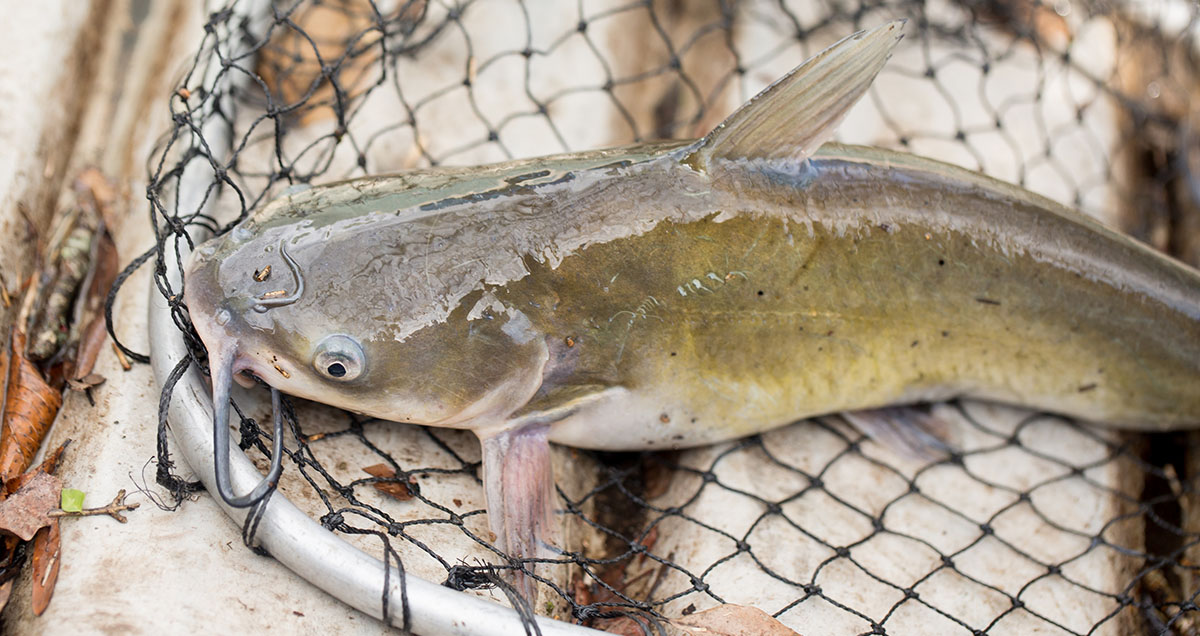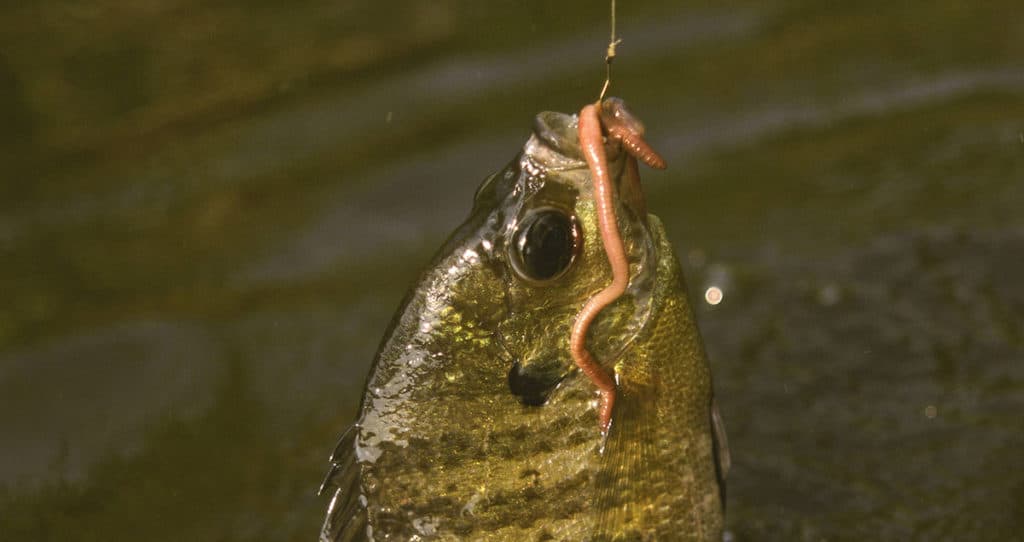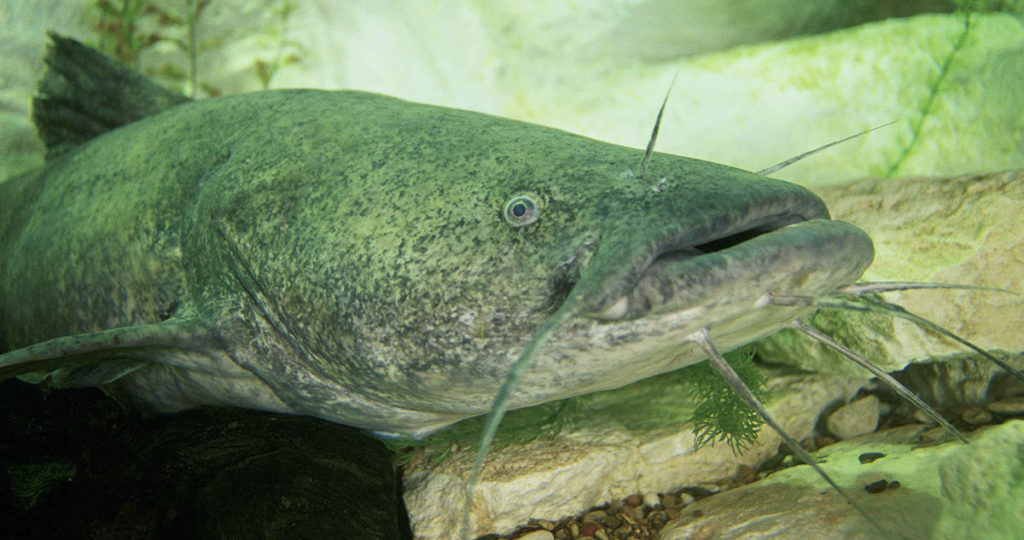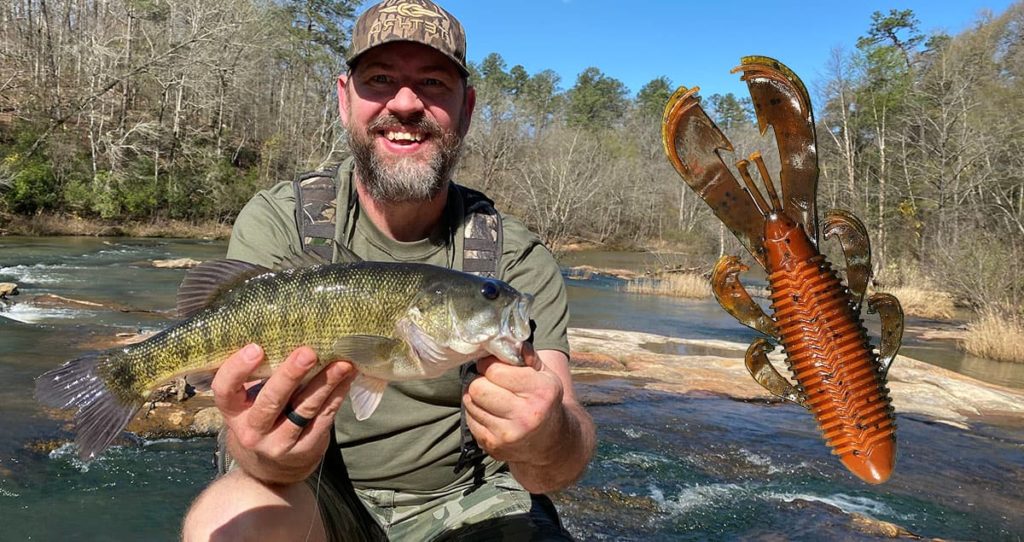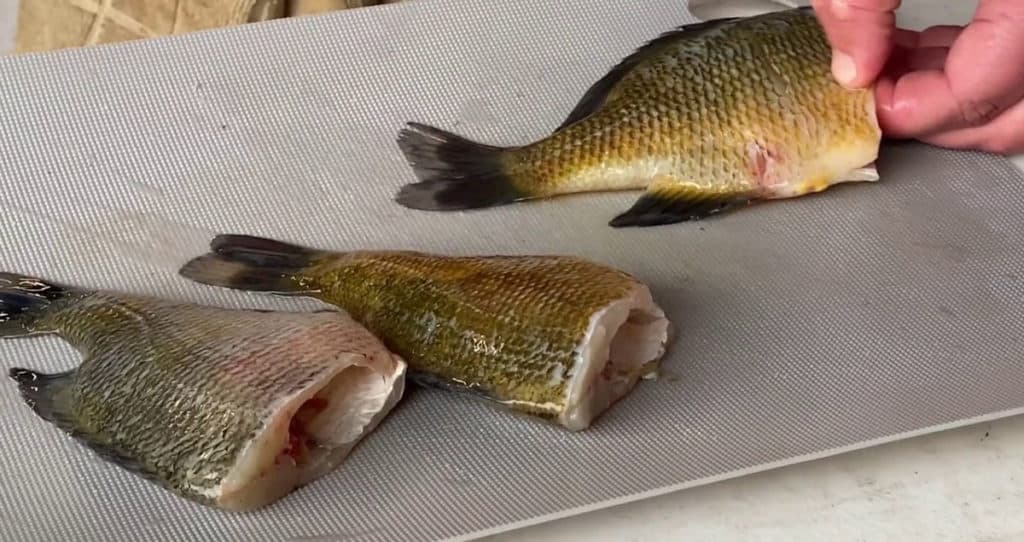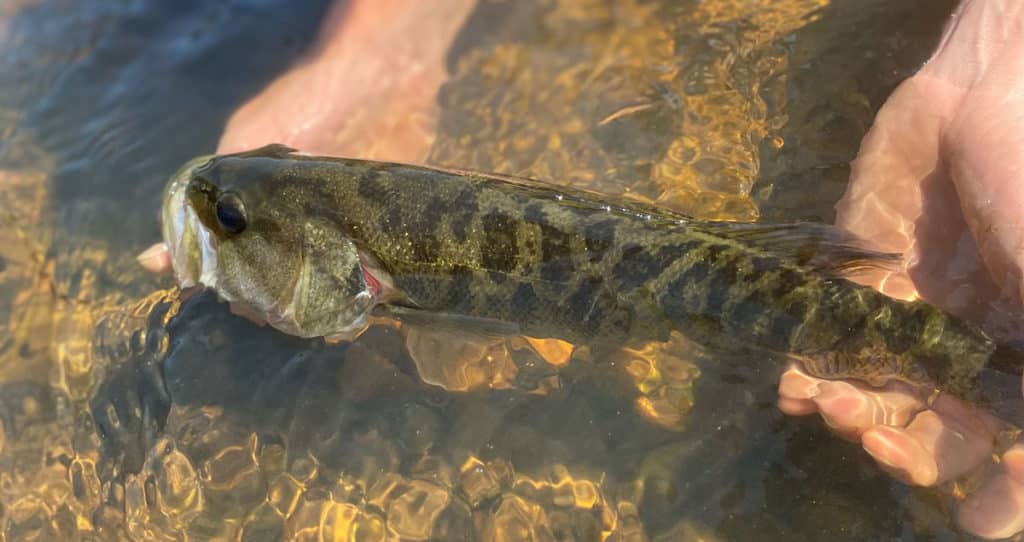Channel catfish are one of the most sought-after game fish in the South. These bottom-dwelling game fish are known for their voracious appetite and can be caught using a variety of baits. However, not all baits are created equal, and choosing the right one can mean the difference between a successful day on the water and coming home empty-handed.
In this article, we’ll take a closer look at the best baits for channel catfish and provide tips on how to use them effectively to increase your chances of landing a trophy-sized catch.
Understanding Channel Catfish
To effectively catch channel catfish, it’s important to have an understanding of their habitat, diet, and behavior. These fish are opportunistic feeders and can be found in a variety of aquatic environments.
In this section of the article, we’ll explore the typical habitat of channel catfish, what they like to eat, and how their behavior changes throughout the year. By understanding these key factors, you’ll be better equipped to select the right bait, the best catfish rig, and the perfect location to maximize your chances of a successful catch.
Habitat
Channel catfish are found in a wide range of aquatic habitats, from small streams and ponds to large rivers and reservoirs. They prefer water that is slow-moving or still, with plenty of cover in the form of vegetation, logs, and rock structures. These structures provide shelter and ambush points for channel catfish, which tend to be bottom-dwelling fish that hide during the day and feed at night.
In addition to cover, channel cats also require adequate dissolved oxygen levels in the water, which can be influenced by factors such as temperature and water flow. Understanding the specific habitat preferences of channel catfish in your area can help you identify the best locations to target these fish.
Diet
Channel catfish are opportunistic feeders that will consume a wide range of prey items. Their diet typically includes aquatic insects, crayfish, small fish, and various types of plant material. As channel catfish grow larger, they tend to shift their focus to larger prey items such as other fish, frogs, and even small mammals.
These popular catfish are also known to scavenge for food, feeding on dead or decaying organic matter found on the bottom of bodies of water. Their diet can vary depending on the season, availability of prey, and other environmental factors.
This varied diet is what allows channel catfish to be caught on a wide variety of baits, including live bait, commercially available baits, artificial lures, and a variety of homemade bait concoctions.
Behavior
Channel catfish behavior can vary depending on factors such as water temperature, time of day, and availability of food. These fish tend to be most active at night, when they will venture out from their hiding places to search for prey. During the day, channel cats will typically remain hidden in areas with plenty of cover, such as logs or submerged vegetation.
In terms of movement, channel catfish tend to stick near the bottom of the lakes, rivers and streams they inhabit, using their sensitive barbels to locate food. They are also known to be relatively solitary fish, although they may congregate during spawning season.
Overall, understanding the behavior patterns of channel catfish can help anglers select the right bait and location to increase their chances of a bringing home a limit.
Natural Baits
Natural baits are anything that a catfish can find in the water. Whether it’s a dead fish or a live minnow, catfish are more than happy to feast on any meat that provides an easy meal. Here’s a look at some of the most popular natural baits for catching channel cats.
Gizzard Shad (Dead or Alive)
Gizzard shad are found in many bodies of water throughout North America, and they are a favorite food of channel catfish. Since they are a natural prey item for channel catfish, they are often more likely to elicit a strike than an artificial bait.
To use gizzard shad as bait, anglers typically use a technique known as “cut bait.” Cut bait involves cutting the shad into smaller pieces, such as strips or chunks, and then placing it on the hook. The size of the bait will depend on the size of the fish being targeted, with larger pieces of bait being more appropriate for larger fish.
It’s important to note that gizzard shad may not be legal to use as bait in all bodies of water, so be sure to check your local fishing regulations before using them. Additionally, anglers should take care to properly dispose of any unused bait to prevent the spread of invasive species.
Overall, using gizzard shad as bait can be an effective way to catch channel catfish, especially larger specimens.
Other Cut Bait
Using cut bait from other fish you catch is a great way to target channel cats. You can simply fillet the fish, leaving the skin on, and then cut the meat into strips or chunks. As with gizzard shad, the size of the cut bait will depend on the size of the fish being targeted, with larger pieces of bait being more appropriate for catching big catfish.
One advantage of using cut bait from other fish you catch is that it can be a cost-effective way to obtain bait. Instead of purchasing pre-packaged bait, you can use the fish you’ve already caught. Additionally, using fresh cut bait can be more effective than using artificial bait, as it is a natural food source that channel catfish are more likely to feed on.
It’s important to note that not all types of fish are equally effective as cut bait for channel catfish. Some species of fish, such as bluegill, perch, and suckers, are known to be particularly effective as cut bait. It’s also important to follow local regulations when using cut bait, as some bodies of water may have restrictions on the types of bait you’re permitted to use.
Worms
What’s more American than sitting on the riverbank catching catfish with a container of redworms? Live worms can be a cheap and readily available bait option for catching channel cats. Pile a few redworms or nightcrawlers on a size 4/0 hook and wait for the catfish to strike.
The continuous movement of the worms in the water as well as the scent they give off will attract fish from all areas of the water. Make sure to check the worms after a while to make sure they haven’t been pulled off by the current.
Grocery Store Baits
Catfish anglers can often find effective baits at their local grocery store. Here are a few examples of grocery store baits for channel catfish and how to use them:
Hot Dogs
Hot dogs are a popular bait for channel catfish because they are cheap and easy to find at the grocery store. Simply cut them into small chunks or strips and thread them onto a hook. Hot dogs can be especially effective when combined with a scent or attractant, such as garlic or cheese.
Chicken Liver
I grew up using primarily using chicken liver to catch channel cats. To do so, simply cut it into small pieces and thread it onto a hook. Chicken liver is very soft and can be difficult to keep on the hook, so many anglers will wrap it in pantyhose or mesh to help hold it in place.
Shrimp
Shrimp can be also an effective bait for channel catfish, especially in areas where they’re found in the wild. To use shrimp as bait, remove the shell and tail and thread the meat onto a hook. Shrimp can also be combined with a scent or attractant for added effectiveness.
Cheese
Some anglers swear by using cheese as bait for channel catfish. Cut the cheese (if you giggled at that, we can be friends) into small cubes or strips and thread it onto a hook. Cheese can be especially effective when combined with other baits or attractants, such as garlic or chicken liver.
When using grocery store baits for channel catfish, it’s important to keep in mind that the quality of the bait can have a big impact on its effectiveness. Be sure to choose fresh, high-quality bait whenever possible, and consider using a scent or attractant to make the bait more appealing.
Commercially Prepared Baits
Prepared baits are where many hardcore catfish anglers thrive. Decades of experience and passed down traditions have created some commercial products that continue to produce channel cats.
CJ’s Catfish Punch Bait
CJ’s punch bait is one of the more well-known and successful punch baits on the market. The shad flavor is fairly oily, so it does a great job at attracting catfish. As long as you have a treble hook, you can dip it into the bucket of punch bait, and it’ll stick to it despite the current.
If you want a true relaxing experience, pile some of this on a treble hook, drop your rod in a rod holder and relax.
Triple S Channel Catfish Dip Bait
The cheese flavor from Triple S is equally as effective as CJ’s punch bait. Similar to other punch baits, you drop a treble hook in it, make sure it’s fully covered, and you’re good to go. The larger the treble hook, the more bait you’re going to be able to keep on it.
Homemade Catfish Baits
Many experienced catfish anglers have developed their own bait concoctions over the years that they swear by. Covering them all could probably fill a substantial book, so we’ll just look at a couple of common homemade catfish baits worth trying.
Homemade Garlic Livers
Homemade garlic livers are a favorite for catfish anglers. Just pick up a container of chicken livers from the grocery, and cut them into bite size pieces. Cover them with salt and then set them in the garage or out in the sun for a few hours. The livers will cure, and then it’s time for the garlic salt. Once you’ve added some garlic salt, let them cure again, and place them in a few Ziploc bags. These work great for catfish bait.
Dough Baits
Homemade dough bait is another option anglers should consider when targeting channel cats. Use one cup flour, one cup of cornmeal, one tin of sardines and an ounce of anise extract. Mix the cornmeal and flour together and then drop in the cut-up sardines. Whisk this all together, and then add the anise extract. Once this is all mixed together, pour in a bit of water until the mix has the consistency of Play-Doh.
Make the dough balls the size of golf balls and then drop them into boiling water. Let them boil for three minutes and then allow them to cool. Once cool, put them in the fridge in a freezer bag. You’re ready to hit the local catfish hole!
Artificial Baits
Artificial bait can be a good option for anglers targeting channel catfish, especially in areas where natural bait is not readily available or legal to use. There are several types of lures that are effective for catching channel catfish, including:
Plastic worms
These are often used by anglers targeting other species of fish, but they can be effective for channel catfish as well. The worms can be rigged on a hook using a variety of techniques, such as a Texas or Carolina rig.
Soft plastic lures
These are plenty of soft plastic lures on the market shaped like minnows, worms, or other types of baitfish, that are designed to mimic the look and movement of natural catfish prey. These lures can be fished on a jig head or weighted hook, and can be retrieved at a variety of speeds to imitate the behavior of live bait.
When using artificial bait for channel catfish, it’s important to match the color and size of the bait to the type of prey that is commonly found in the body of water being fished. Additionally, anglers should use a scent or attractant to make the bait more appealing to channel catfish.
One effective technique for fishing with artificial bait is to cast the bait out and then retrieve it slowly, using a jerking motion to imitate the movement of live bait. Another technique is to fish the bait on the bottom, allowing it to sit still and using a light jigging motion to make it appear more lifelike.
Overall, artificial bait can be an effective option for catching channel catfish, especially when natural bait is not available or practical to use. Just be sure to use the appropriate bait and technique for the conditions you are fishing in to maximize your chances of a successful catch
Tips for Using Channel Catfish Baits
Catching cats requires an extreme amount of patience! Depending on the day, you may or may not land fish. Stay patient, follow these tips, and you’ll have the best chance of filling your stringer.
Keep Bait off the Bottom
Yes, catfish are bottom feeders, but if you can keep your scented bait off of the bottom, the scent will spread better throughout the water. Many anglers will put a large weight a foot or two above their bait to keep the bait off the bottom. This is an effective way to entice catfish from all over.
Move Around
If you aren’t landing fish in a certain spot, don’t be afraid to move. Give a spot 20 or 30 minutes, and then you can move. The more places you try, the better.
Fish at Night
Channel catfish are far more likely to feed at night than during the day, so make sure you’re on the water during dusk. If you can find catfish right as they’re beginning to feed, you have a great chance of having a fun night of catching fish.
Look for Change in Water Depth
If you can find a drop-off, you’ll often find catfish. During the day, catfish will stay deep in the water and move to more shallow water at night. Fish along the drop-off as the sun starts to set.
Final Thoughts
Channel catfish can be fairly predictable as long as you have the right bait. Whether you’re using a natural bait, a prepared bait or artificial bait, you always have a chance at catching them. Remember, make sure your baits are heavily scented and/or lively. Catfish primarily rely on scent and vibrations to find their food, so the more of both you give them, the better.

